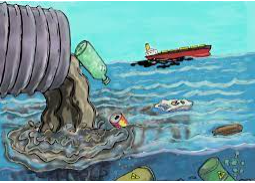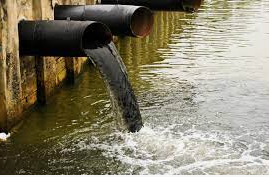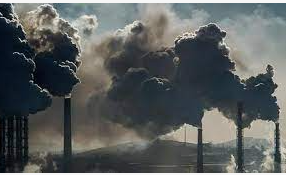Water Pollution | Definition, Causes, Effects, Solutions
Water Pollution
Have you ever imagined we are the major polluters of Water? Also, Do you ever notice what effects polluted water has on us? Almost 90 % of us are unaware of this. So, no problem, I am going to discuss the different types of Water Pollution on this topic. So concentrate on that topic to understand this. So, guys let’s start!
What is Water Pollution?
Water pollution is defined as the contamination of water sources with substances that make the water unusable for drinking, cooking, cleaning, swimming, and other activities. Pollutants are chemicals, waste, bacteria, and parasites. All forms of pollution eventually reached the water.

Also Read:
- What is Ecology, its Types and Components
- Disaster Management, Prevention and Mitigation
- Eco-Friendly Energy
- Environmental Development and Sustainability
Types of Water Pollution
- Chemical Pollution
- Microbiological Pollution
- Groundwater Pollution
- Nutrient Pollution
- Surface Water Pollution
- Oxygen-Pollution Depletion Pollution
Chemical Pollution
Chemical pollution is defined as the presence or increase of an environment of chemical pollution that does not exist or is at a higher level than the natural background. Many of the chemicals that pollute the environment are artificial and result from a variety of activities that use toxic chemicals for different purposes.

Chemical Intoxication
Chemical death is caused by exposure to chemical contaminants and can have immediate or delayed effects that can occur weeks or months after exposure. Chemical poisoning can lead to the death of a person who inhales many of these substances.
Chemical Compounds
Chemical compounds are organic or inorganic chemicals that often cause chemical contamination. The most common chemical contaminants are compounds that are regularly used on large surfaces. This means that they do not decompose quickly and naturally. Examples include many pesticides, herbicides; pesticides used in agriculture and crop production, and chlorinated solvents used in many industrial and wood-cleaning processes.
Effects of Chemical Pollution
Chemical pollution is caused by different chemicals from different sources and can have different health effects. These effects are generally associated with exposure to multiple chemicals. Chemical pollution causes serious health problems. The most common are eating poisonous foods, drinking heavily polluted water, or breathing heavily polluted air.
Chemical poisoning can cause serious health effects with immediate symptoms and illness or a delayed onset that can occur after weeks or months. It depends on what the pollutant is and how exposed you are. Be careful; don’t assume that everything is normal without immediate health effects.

For long periods, sediments can accumulate a variety of chemical pollutants. Unproven chemical contamination of seawater poses a significant risk to ecosystem health, ultimately leading to minor or fatal chemical poisoning in humans after the consumption of contaminated fish and seafood. However, there are prevention tips you can follow to reduce chemical contamination.
Microbiological Pollution
Microbiological water pollution is a form of natural water pollution that is usually caused by microorganisms. Many types of microorganisms live in water and cause disease in fish, land animals, and humans. Microorganisms such as:
- Bacteria
- Virus
- Protozoa
Serious diseases such as cholera are caused by microorganisms that live in the water. These diseases usually affect public health in poor countries because they lack the facilities to treat polluted water.
Groundwater Pollution
Groundwater pollution occurs as a result of pollutants entering the soil in natural reservoirs of groundwater called aquifers. As soon as the discharged pollutants reach the groundwater, they cause pollution. It is a form of water pollution mainly caused by the intentional or unintentional release of substances through anthropogenic activities or natural causes.
Pollutants generally move through aquifers based on their biological, physical, and chemical properties. Processes such as diffusion, dispersion, adsorption, and the speed of water movement often facilitate movement. In general, however, the movement of contaminants in aquifers is usually slow and therefore concentrations are usually high and in a form known as a plume.
Causes of groundwater contamination
Natural Resources
Natural substances in soil and rock can dissolve in water and cause pollution. These substances are sulfate, iron, radionuclide, fluoride, manganese, chloride, and arsenic. Others, such as decomposing material in the soil, can seep into the groundwater and move along as particles.
The WHO report shows that the most common pollutants are fluoride and arsenic. Natural causes of pollution can be tested with the Groundwater Assessment Platform (GAP). GAP estimates pollution levels based on environmental, geological, and topographical data.
Septic System
Worldwide, septic tanks are a major cause of groundwater contamination. The pollutants are leaks from prisons, septic tanks, and wells. For example, 25% of American households rely heavily on the septic system to dispose of their waste. The large number of users who depend on this system makes it one of the main polluters.
Hazardous Waste Disposal
Hazardous waste such as photographic chemicals, motor oil, cooking oil, paint thinner, medicines, pool chemicals, paints, and garden chemicals should not be discharged into septic tanks or directly into the environment as they can cause serious contamination. These chemicals must be disposed of with the assistance of a licensed hazardous waste disposal company.
Petroleum Products
Oil storage tanks are located underground or above ground. Petroleum products are also mainly transported underground through pipelines. Leakage of this substance can cause water pollution.
In the United States, approximately 16,000 chemicals are spilled from trucks, storage containers and trains each year, primarily during oil shipments. Spilled chemicals are diluted with water and seep into the soil and can contaminate groundwater.
Nutrient Pollution
Nutrient contamination is when too many nutrients, especially nitrogen, and phosphorus, are added to the water and can become fertile, causing algae to grow.
In urban areas that use grass and garden fertilizer, nutrients can dissolve in the soil. Dirt and grime are also good sources of nutrients. Check out this view of the Chesapeake Gulf, one of the largest bodies of water in the Northeast, to see how it happens. This figure shows the amount of marked material (e.g. clay, clay, rubble) in the waterways before (left) and after (right) in the areas with the highest rainfall in 2011. All flooding and flooding from these rains reached the Gulf of Chesapeake
This process is also known as eutrophication. Excessive amounts of nutrients can lead to more serious problems such as: B. low oxygen levels in the water. The heavy algae growth blocks the light that plants like seaweed need to grow. When algae and when die, they are destroyed. During the decomposition process, the oxygen in the water is used up, so the dissolved oxygen content in the water is low. It can also kill fish, crabs, snails, and other aquatic animals.
Surface Water Pollution
Water from lakes and rivers used by municipalities, agriculture, and industry is increasingly exposed to pollutants from manufacturing or the environment.
Fertilizers can leak into rivers and flooding can lead to surface water pollution as the volume spreads to areas not normally exposed to water. These contaminants are why water must be treated before it can be used for human consumption.
Although the water looks clear, it may not be clean. Municipalities, therefore, need a program to test and treat possible contamination.
One of the greatest risks to humans from surface water pollution is the pathogens that cause types of waterborne diseases. They come from both human waste and industrial sources, including organic chemicals and heavy metals.
Contamination usually occurs when food is prepared with contaminated water or by a person drinking it. This is a common cause of the disease, especially in developing countries.
Contamination of surface water can also cause toxic products to remain in fish through exposure to pathogens. Municipal water suppliers must have access to the expertise of surface water treatment services to diagnose and treat the problem before it becomes a major health hazard.
Oxygen-pollution Depletion Pollution
The occurrence of these effects is often exacerbated by pollution from landfills, industrial wastewater, and sewage. Excessive organic pollution can cause rapid depletion of river hydrogen, the buildup of ammonia, and the loss of fish and invertebrates. this is also involved in the Types of Water Pollution.
The primary sources of toxic load are domestic pollutants; companies such as paper manufacturers or food processors; and pollution of farms and farm life. Increased agricultural production and agricultural production, coupled with a larger percentage of the population associated with pollution practices, led to an increase in the discharge of pollutants into surface water seen in many European countries after 1940.
In many European countries. However, in the last 15 to 30 years, the increase in biodegradable wastewater treatment has reduced biodiversity throughout Europe.
Final Words:
Hope so, you have read the post carefully. I have chosen the most advanced data for you to read. Avoidance of the wastage of water has become so much crucial for us. Most of us do not think about it. That is wrong because we are wasting our natural resources. I have described types of wastewater and how we can control the wastage of water. If you have any quires, you are free to ask in the comment section box.